This geologic wonderland was once considered a land of fabled lore. The mere existence of such a place was originally dismissed, derided simply as a crazed apparition in the minds of madly deranged men who had spent too many lonely nights in the cold mountain wilderness of what would eventually become Yellowstone National Park.
Guide to Yellowstone
Yellowstone National Park
This is the world’s first national park, the beginning of what some have called “America’s Best Idea”. While the value of a nation’s ideals and contributions to political and natural philosophy can be argued, it is certainly beyond debate that this is one of the strangest locations on Earth, and one of the wildest places remaining in North America.
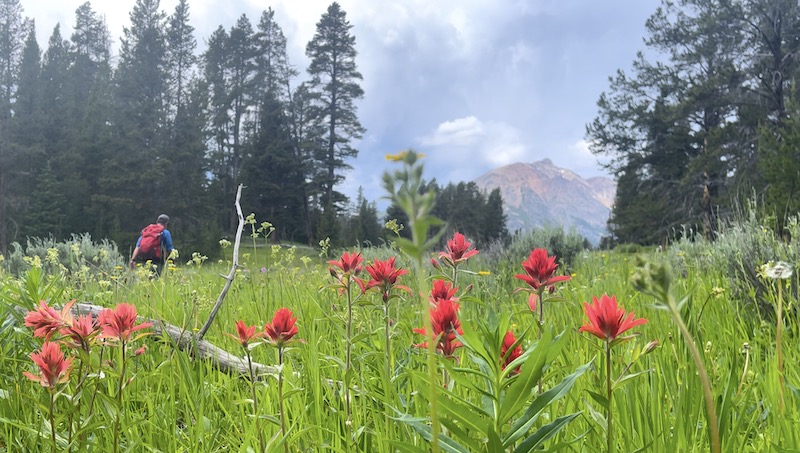
Amid bubbling pots of mud and colorful rainbow springs of boiling water, stand towering forests of lodgepole pines through which rise clouds of scalding steam. These scenes are backed by bursting fountains of water that erupt from the Earth as if sent upward by some dark lord of the underworld.
The scenes we witness here today are the result of a still-active super-volcano. Yellowstone is home to more than half of the world’s hydrothermal features, with over 10,000 such oddities located within the park, 300 of which are awe-inspiring geysers. All of these bizarre wonders are fueled by continued volcanic activity deep beneath the largest caldera in North America, the boundaries of which extend some 30 by 45 miles.
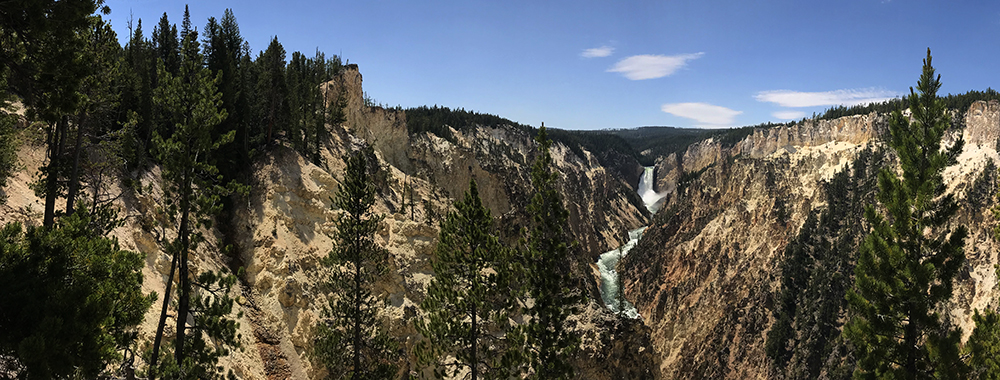
This massive volcano last erupted an estimated 640 million years ago in a blast that scientists suggest was about a thousand times greater than the 1980 eruption of Washington State’s Mount St. Helens. Ash from the cataclysmic event covered the entire continent and the world’s skies darkened with a deep haze.
Yellowstone is Still Alive
This baby is still alive, a fact illustrated by the park’s endless number of thermal features, and the thousands of small annual earthquakes that are registered on numerous seismic counters. Most of these rumblings lack ratings that are detectable by humans, so they go unnoticed.
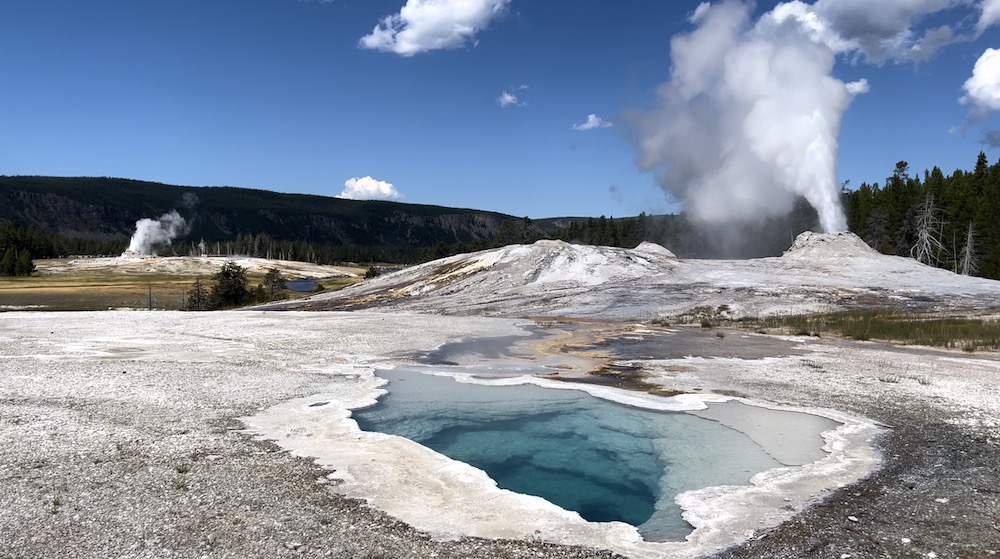
Someday however, this killer volcano will once again flex its strength in an event that will undoubtedly affect the entire planet. It could be tomorrow, it could be another year, and it could be another 25,000 years. Scientists say an eruption any time soon is unlikely, but… well dude, we just don’t know… all the more reason to go see the world’s first national park this year.
At 2.2 million acres, Yellowstone is the second largest national park in the lower 48. Its main attractions are scattered along 142 miles of the circle shaped Grand Loop Road (GLR). A figure 8 is possible as well, thanks to the Norris – Canyon Road, which lies in the middle of the park, and connects Canyon Village with the Norris Geyser Basin. This basically creates a north loop, and a south loop.
Grand Loop Road
The Grand Loop Road provides access to all of the park’s well-known features, but can be congested with crowds any time of the summer. Add a herd of bison loitering aimlessly in the middle of, the road, and it will take you a while to maneuver your metal coffin through the masses. Relax, breathe, smile and put on your fave jazz album, it’s all part of the park’s charm…
There are five entrances to Yellowstone, all of which lead to the GLR, which in turn leads to each of the park’s six main villages. Although it is possible to drive the route and see the main highlights in a single day, such a tour is simply an insult to the park, and to oneself, as a far more enjoyable experience will be attained with a three or four day minimum stay. There is a lot of terrain to cover in this park.
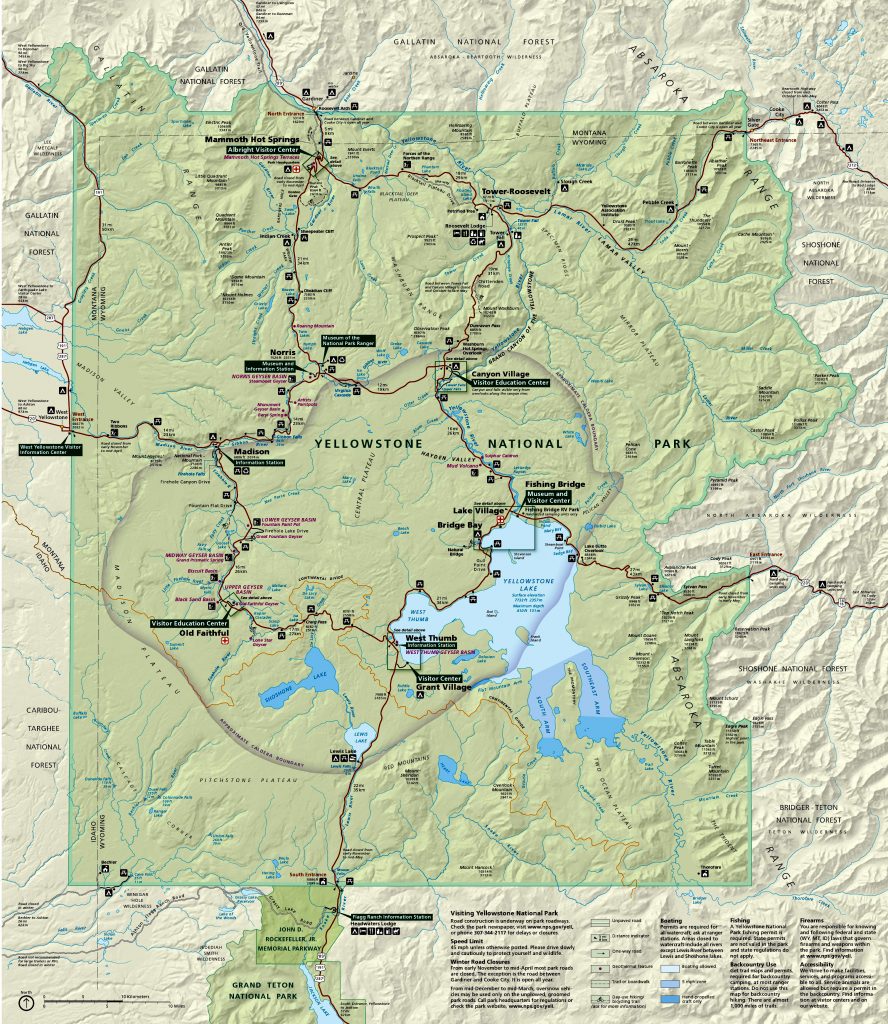
For the sake of directional logistics, let’s take a short clockwise tour beginning at the park’s north entrance. This description is of clockwise drive on the Grand Loop Road, and will skip the Norris Canyon Road.
At the park’s northern gate in Gardner, Montana, visitors pass through an arch that has welcomed guests since the days of Theodore Roosevelt. In fact, this structure’s cornerstone was laid by the former President during his visit to Yellowstone in 1903. Above the arch is inscribed a quote from the Organic Act of 1872, which created the park. “For the Benefit and Enjoyment of the People.”
Mammoth Hot Spring
About 5 miles inside the north entrance lies the village of Mammoth Hot Springs, home to immaculate white terraces of travertine, steaming pools and rivulets flowing with mineral-rich water which continually feeds the growth of the bizarre structures found in this area. Trails lead from the hotel and visitor center into the terraces. A 1-mile loop drive allows motorists to access the top of the terraces, from where boardwalks lead down into the same areas.

Mammoth is also home to Historic Fort Yellowstone, constructed to be the park headquarters by the U.S. Army, who were first tasked with protecting the national parks, prior to the formation of the National Park Service. Built between 1890 and 1916, these stone and wooden structures are still solid today and most are used as private residences for park rangers.
However a few are open to visitors, including the Chapel which was constructed in 1913, & the New Guardhouse from 1910, which you’ll likely want to skip, as it is the park jail today. The largest is the Double Cavalry Barracks, built in 1909, which housed 200 troops and today is the park’s Administration Building. The most accessible is the Bachelor Officers’ Quarters, built in 1909, which was home to six single officers. Today, this is the Horace Albright Visitor Center and houses a museum on the area’s human history.
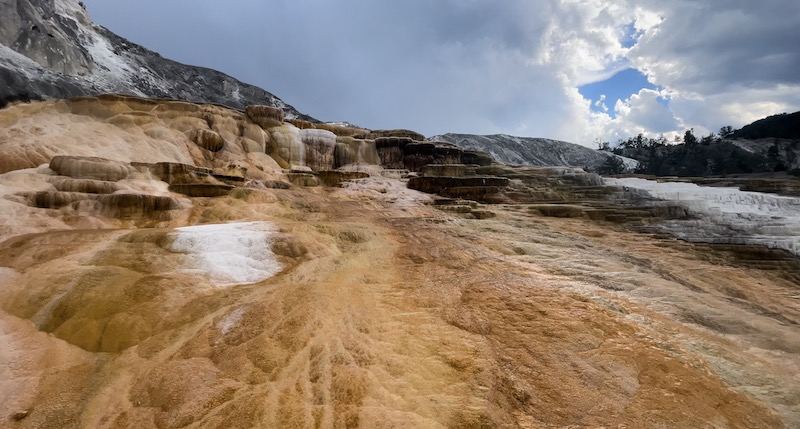
The roads in this area are often good ground for big horn sheep and pronghorn sightings. Elk often lounge in the lush green lawns of Mammoth Village, which includes the Mammoth Hot Springs Hotel, an adjacent dining room, an 85-site campground, post office, gift shop, gas station and a medical station.
Tower-Toosevelt
Traveling east from Mammoth on the GLR soon brings drivers to the Tower-Roosevelt Village, the smallest of the service-providing locations in the park. Several cool hikes leave from here including Specimen Ridge and the short stroll to Tower Fall, a scene made famous thanks to artistic works of photographer Henry Jackson, whose 1871 image of the falls was presented to Congress as a testament to Yellowstone’s particular beauty.
Services also include a small store and a 24-hour pay-at-the-pump gas station. Horseback rides are available at the lodge and a popular activity here is a guided trail ride to a western-style chuckwagon cookout. Along the ride, knowledgable guides provide information regarding park history and local geography.
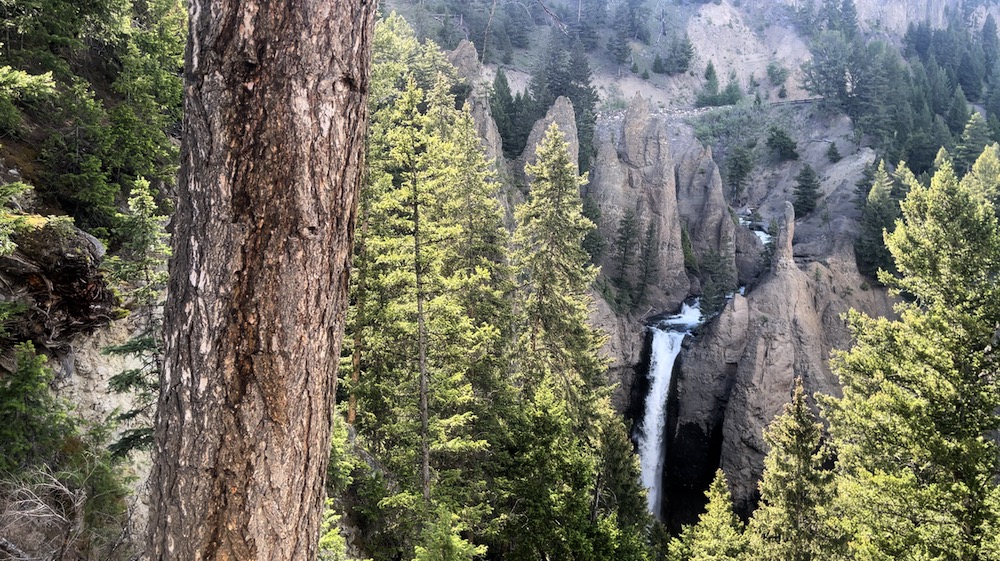
Although lacking the same luxuries as the busier Yellowstone locations, the Roosevelt Lodge Cabins offer economically conscious travelers the cheapest lodging in the park. These small, basic cabins are adequately heated by wood stoves and provide an authentic level of rustic western appeal.
The family style dining room tosses meat and potatoes onto the table, along with cup after cup of black coffee. The former President would certainly find the accommodations fitting for life on the range, and would likely slap you on the back for just staying here. The 31-site Tower Fall primitive campground is south of the village on the GLR.
Lamar Valley
Just past Tower-Roosevelt Village to the east on the Northeast Entrance Road, is Lamar Valley, one of the more popular areas in Yellowstone for roadside wildlife viewing, especially as a place to see wolves. In fact, over the years, many folk have taken to referring to Lamar Valley as “The American Serengeti”.

Outside the park to the east, this road, known as the Beartooth Highway, continues to the tiny gateway town of Cooke City. Beyond here, the highway leads to a junction with the Chief Joseph Highway, which winds through a spectacular landscape on its southward coarse to the cowboy town of Cody, Wyoming. Motorists who stay on the north eastward coarse of the Beartooth, can travel an even more invigorating route onward to Red Lodge, Montana, 69 miles to the park’s northeast. The Beartooth Highway is closed in winter, east of Cooke City.
Canyon Village
The GLR leads south from Tower-Roosevelt over Dunraven Pass, which at 8,859 feet, is the highest pass in the park, offering easy access to the popular park summit of Mount Washburn. The road continues toward Canyon Village, which lies in the heart of the park and is one of its busiest locations. This area is highlighted by the Grand Canyon of the Yellowstone, known for the Lower and Upper Falls, which cascade downward, flanked by the colorful canyon walls of the Yellowstone River.
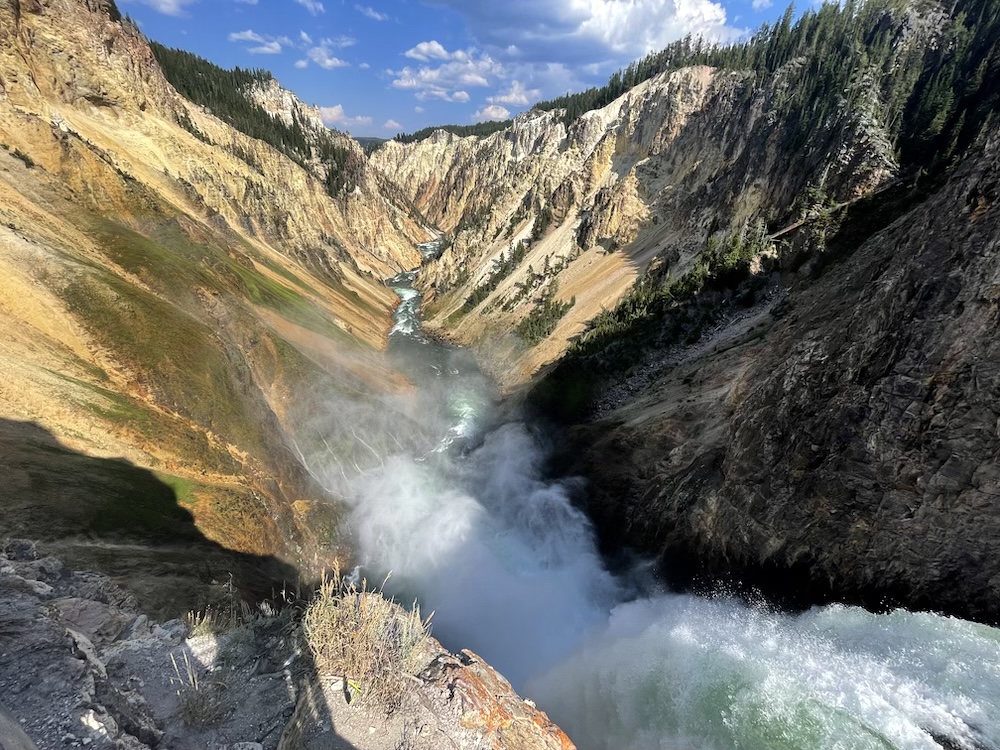
These features have been the subjects of countless paintings and photographs and are easily witnessed from above along short trails. At Artist Point, a brief stroll leads to a distant view of the raging 308-foot Lower Fall, whose rushing waters stream down oxidized cliffs of iron-stained orange, yellow and red rhyolite as the river plummets into the canyon below.
“It is a new phase in the natural world; a fresh exhibition of the handiwork of the Great Architect; and while you see and wonder, you seem to need an additional sense, fully to comprehend and believe.”
Nathanial Pitt Langford – 1871
Upper Fall stands at 109-feet and can be observed from a dizzying overlook that lies just off of the road leading to Artist Point. Uncle Tom’s trail is a short but somewhat strenuous trail that leads into the southern edge of the canyon, providing closer access to the falls. On the northern rim, a trail from Inspiration Point to Grand View offers nice scenes and the paved Brink of the Lower Falls Trail descends a steep 500 feet to place hikers right next to the action.
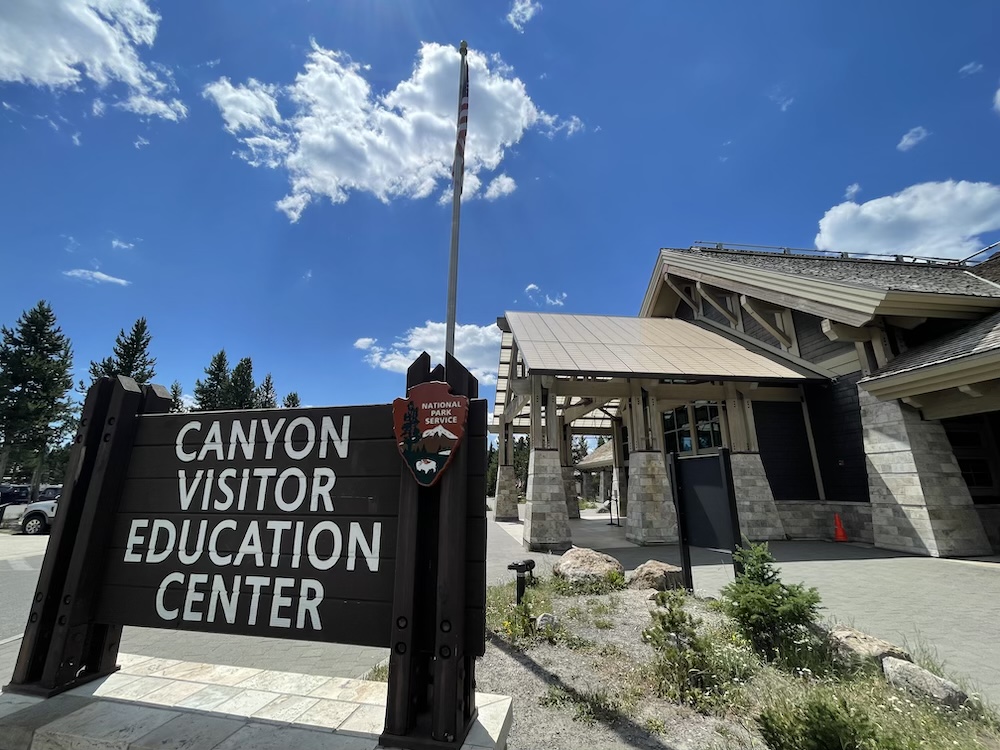
Canyon Village is home to the Dunraven Lodge, widely considered the best lodging option in the park for the price. Most services are offered here, including a restaurant, a 273-site campground, a gas station and a store, and a small village provides a variety of rudimentary services. Horseback rides are offered nearby and the Canyon Visitor Education Center, is located here as well, which is one of the park’s most complete visitor centers.
Hayden Valley
The journey from Canyon Village to Lake Village leads southward along the Yellowstone River, through Hayden Valley, one of the best wildlife viewing regions of the park. This is a short drive, but it can take 2 hours if you are unfortunate, or fortunate, enough to get stuck in a “bison jam”.
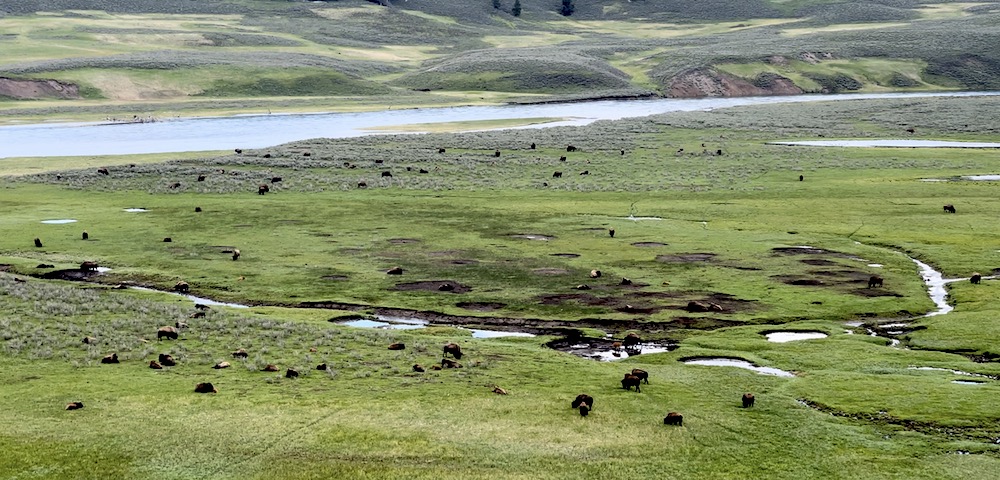
This valley is commonly ripe with action, as trumpeter swans, white pelicans, Canadian geese and bald eagles flock to its waters, which also attract herds of elk and scavenging coyotes. Grizzly bears and wolves frequent areas such as this in spring, drawn by the remains of bison and elk that perished during Yellowstone’s harsh winter.
Cutthroat trout can be seen heading toward their spawning grounds at LeHardys Rapids in June, and may also be witnessed at Fishing Bridge (no fishing allowed), upon arrival at Yellowstone Lake.
Yellowstone Lake
Yellowstone Lake sits at 7,733 feet above sea level, making it the largest high-elevation lake in North America and one of the largest such bodies of water in the world. It holds more than 140 miles of shoreline and its icy-cold waters cover an area of roughly 14 by 20 miles.
The lake’s deepest point is roughly 410 feet below the surface, where temperatures are a constant 42° F (6°C). Most of its surface is a sheet of ice until early June, except for areas that are warmed by thermal features such as underwater geysers that keep patches of the lake free from ice even in the coldest of winters.
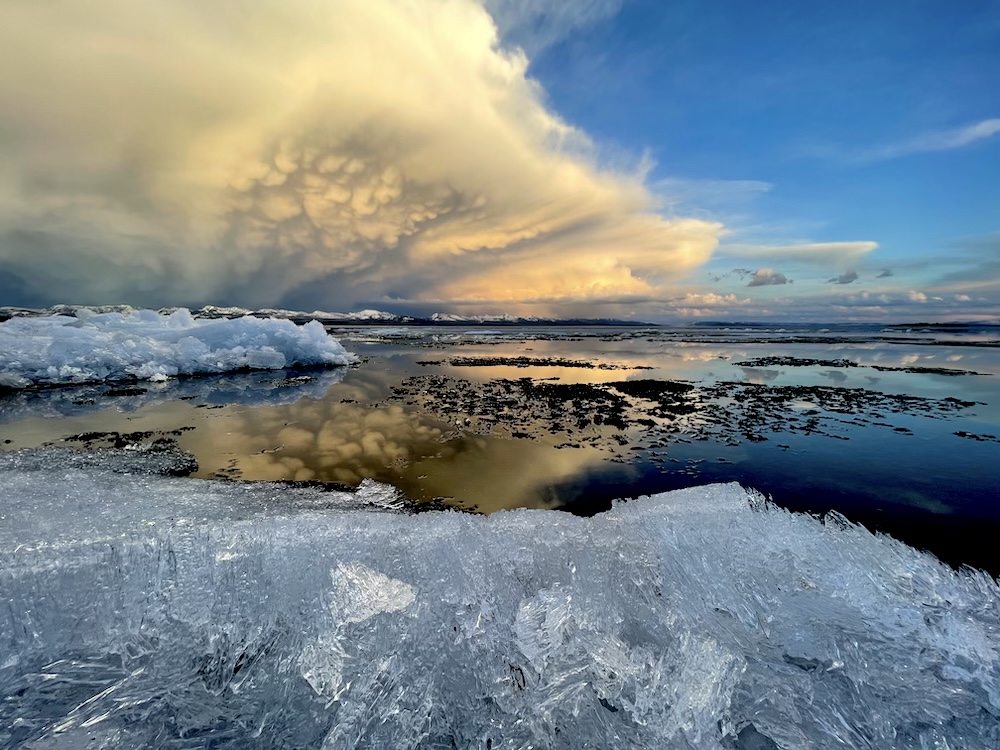
This large body of water offers excellent opportunities for boating and fishing, and its miles of stony beaches are pleasant areas for lakeside walks. Summer storms are likely however, which can turn the lake into a frigid, raging sea of whitecaps and waves that create dangerous waters for unsuspecting boaters not familiar with mountainous conditions.
Lake Village and neighboring Bridge Bay and Fishing Bridge are three separate locations all nestled short distances apart at the northern end of Lake Yellowstone. Most services are available here including a medical station at Lake Village. A ranger station, a 431-site campground, store, and boat ramp are available at Bridge Bay in addition to a marina, where commercial boat tours of the Lake depart. Fishing Bridge has a a store, food service, a gas station and a 325-site hard-sided-only RV park.
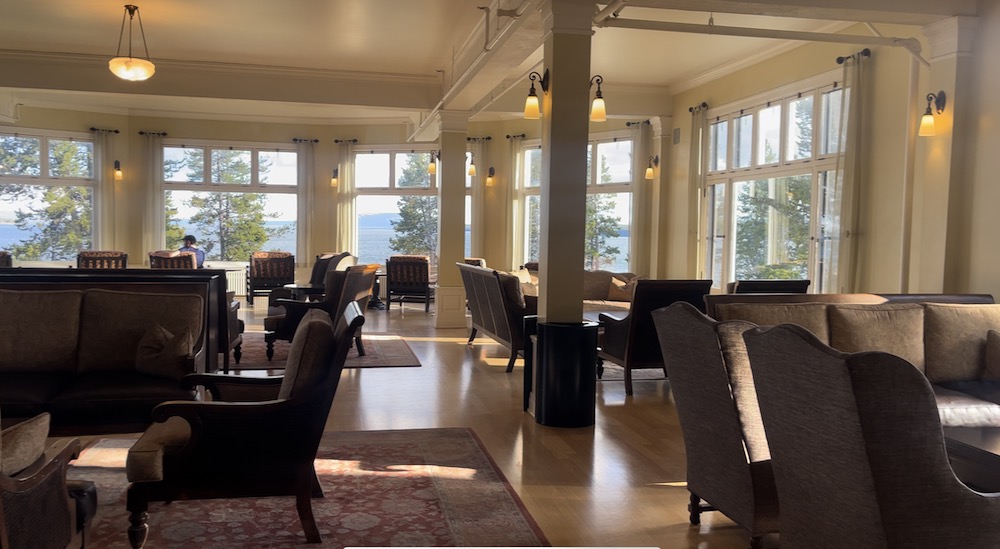
Lake Village is home to Lake Hotel, a finer establishment built in 1891, offering accommodations that range from basic rooms to a Presidential Suite. A nice bar is found in the lobby, with a relaxing Sun Room that presents nice views of the lake. During dinner hours, talented pianists tinkle the ivories as guests sip cold martinis prior to dinner in the adjacent dining room.
For those who want a more low-key bar, the Lake Lodge offers a Willie’s Bar and Burger Joint. A couple dozen rocking chairs on the porch provide an incredible view of the Lake and the Absoroka Mountains, which rise toward the heavens on the Lake’s opposite shore.
West Thumb Geyser Basin
From here, the GLR follows the lakeshore southward for 21 miles, while Highway 20 heads east toward 8,530 foot Sylvan Pass, the East Entrance and Cody, Wyoming, which is 53 miles east of the park boundary. Southbound GLR travelers will enjoy several nice views of the lake, and have a few nice picnicking opportunities while motoring toward the West Thumb Geyser Basin, which is a don’t miss site.
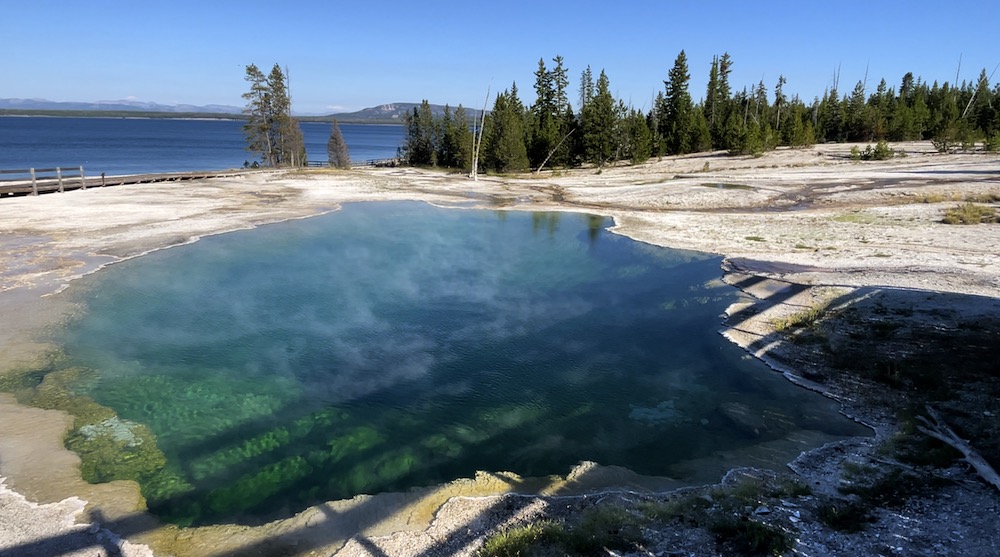
Parking spots can be a challenge to acquire at West Thumb, but the unique views of its thermal features set against the backdrop of Lake Yellowstone rewards the effort. Some of the highlights, such as Fishing Cone, are actually in the lake, and the short boardwalk loop will likely provide memorable photographs of the 53′ deep Abyss Pool, and the hypnotically blue waters of Black Pool, accented with the silhouettes of passer-byes on the opposite walkway. Its a cool scene…
Grant Village
At West Thumb, Highway 89 leads toward the South Entrance and Grand Teton National Park. A short drive in this direction leads to the turnoff to Grant Village, named for President Ulysses Grant, whose signature created the park in 1872. This is a common first stop for those entering from the Tetons via the south entrance, and offers a full range of services.
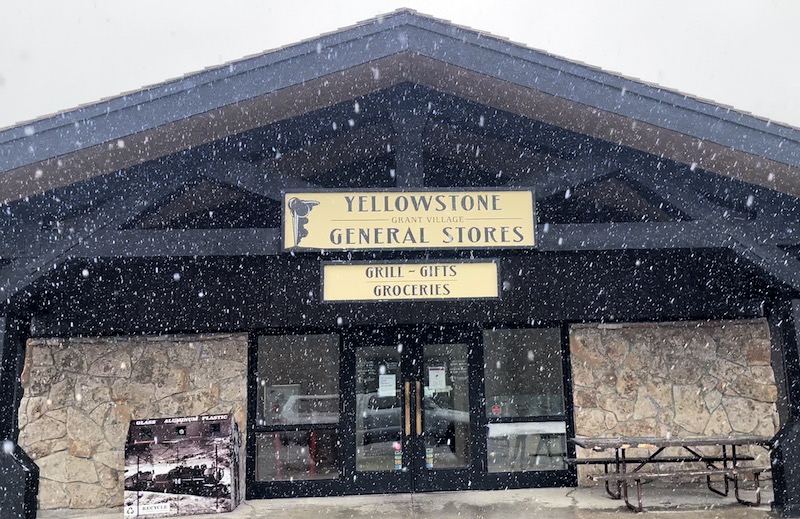
The village, built in 1984 to accommodate a growing number of visitors, sits on the southern shore of Lake Yellowstone, and features the lakeside Bear Lodge, which contains two six-story buildings that have 50 rooms each, as well as a 430-site campground. There is a casual lakefront restaurant, a lounge and a gift shop.
Old Faithful
Continuing on the GLR to the west, motorists twice pass over the continental divide at more than 8,000 feet above sea level. The descent from Craig Pass, leads eager visitors past the spectacular Kepler Cascades and onward to the park’s most famous feature, the Old Faithful Geyser, and its namesake village in the upper-southwest corner of the park. This is a busy place, and during the popular summer months, thousands gather like clockwork to witness this odd natural phenomenon.
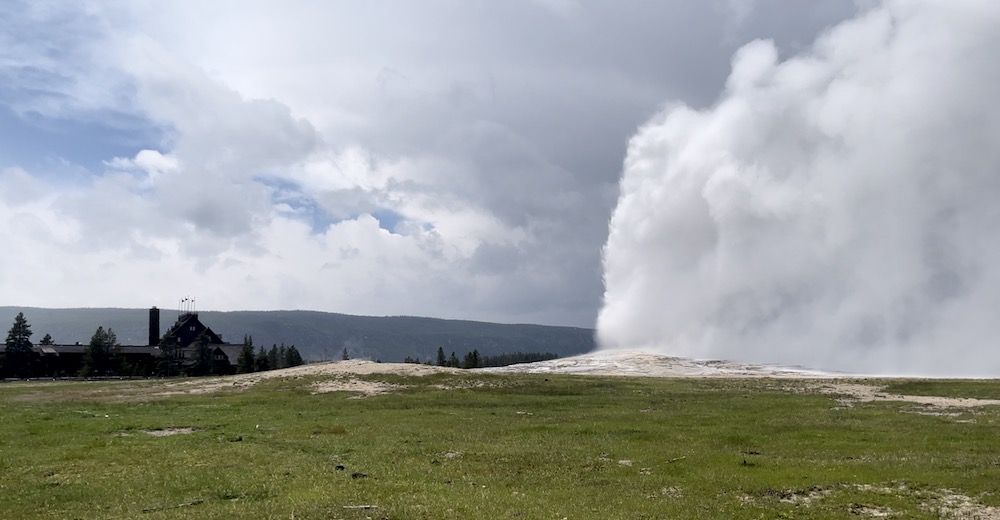
The Old Faithful Geyser erupts around 17 times per day and despite common belief, the duration between eruptions can vary somewhat, yet it remains largely predictable. If the previous eruption lasted less than 2.5 minutes, the time until the next eruption will be around 60 minutes. If the previous eruption lasted more than 2.5 minutes, it may be up to 110 minutes before the bizarre show pops off again. Shorter eruptions eject some 3,700 gallons of water at a temperature of 204° F while longer eruptions can produce a shower of more than 8,400 gallons.
Although Old Faithful is the area’s main attraction, it has many neighbors that offer spectacular shows of their own, four of which are predictable in their eruptions. This area’s geysers are part of the Upper Geyser Basin, which contains the highest concentration of these features in the world.
Within one square mile, there are more than 150 of such hydrothermal waterways, five of which offer regular displays. These include Castle, Grand, Daisy, Riverside and of course Old Faithful. Check with the visitor center to obtain a schedule of eruption predictions maintained by park service naturalists.
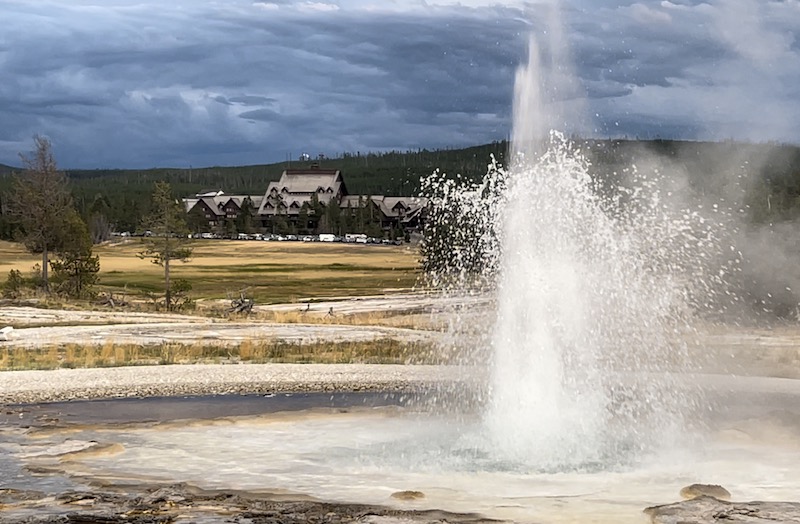
Old Faithful Village offers most services including restaurants, snack bars, gift shops, a gas station, ranger station, visitor center, medical clinic, a lodge and of course, the famous Old Faithful Inn.
This National Historic Landmark was built in the winter of 1903-1904 and is one of the few remaining log hotels in the United States. Designed by Robert C. Reamer, who wanted the structure to replicate the “chaos of nature”, at nearly 700 feet in length and seven stories high, with some 327 rooms, the hotel is a massive masterpiece of design and craftsmanship and is well worth a visit. Some find that a drink or two on the inn’s balcony is fine way to enjoy Old Faithful’s eruption.
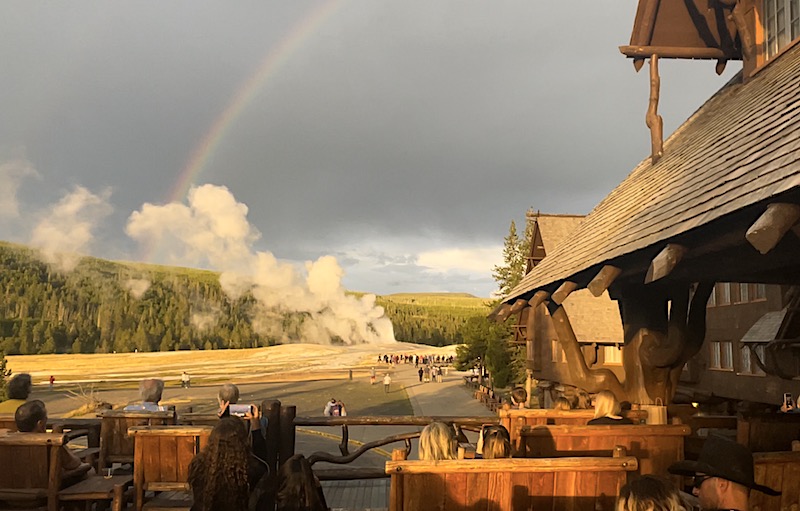
The southwest section of Yellowstone is home to a few other geyser basins scattered along the Little Firehole River. These can easily be accessed from Old Faithful village.
Leaving Old Faithful, the GLR bends back toward the north. Just up the road a little way is the Midway Geyser Basin, home to the Excelsior Geyser, whose massive 200×300 foot crater emits a constant discharge of more than 4,000 gallons of water per minute, feeding hot water into the aptly-named Firehole River.
Grand Prismatic Spring
Here also, guests flock to the absolutely magical Grand Prismatic Spring. At 370 feet in diameter with a depth of more than 150 feet, this is North America’s largest hot spring. It dazzles visitors with its splendid display of blues, greens, yellows, reds and browns from a short 1/4-mile boardwalk across its surface, or a longer 2 mile hike to stunning overlook whose trailhead is just a mile or so to the west. Despite the crowds, this is a don’t miss.
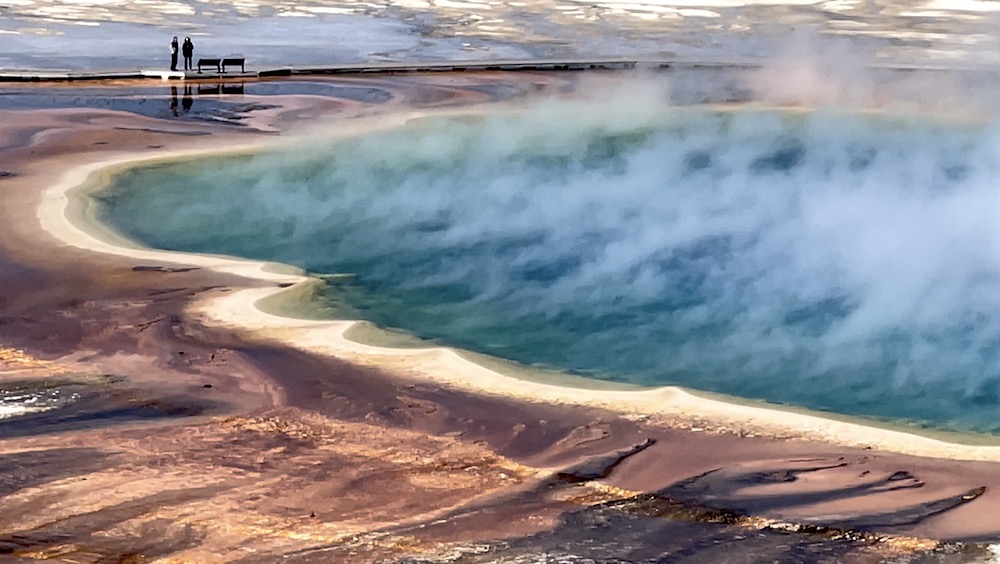
Further north is the Lower Geyser Basin, home to the Fountain Paint Pots boardwalk trail and the Great Fountain Geyser, which is another of the park’s predictable geysers. It can be accessed by auto via the 3 mile, one-way Firehole Lake Drive, which as of 2022, was closed to traffic due to road conditions, but can be accessed on foot.
Firehole River Drives
Just to the north is the Fountain Flat Drive, not to be confused with the above mentioned Firehole Lake Drive (closed), which follows the Firehole River for just over a mile before ending at the Fountain Freight Road, which is a hiking/biking trail that provides access to Sentinel Meadows and the Fairy Falls Trail.
Further north on the GLR, motorists find the Firehole Canyon Drive, a 2 mile, one-way single-lane road that winds through lodgepole pines as it runs along sheer cliffs above the Firehole River. This road provides access to one of the park’s most enjoyable swimming areas, about a mile or so upstream from the 40-foot Firehole Waterfall.

A couple of miles further north on the GLR is Madison Junction, where a 278-site campground is found, along with the Madison Information Station, housed in a historic cabin that dates to 1929. This is the turnoff for those heading out to West Yellowstone, which offers a full array of lodging and other services.
Madison Junction
As guests drive through Madison Junction, one little known peak may stand out. National Park Mountain stands just to the southwest of the road, as the bridge passes over the Gibbon River.
Interested visitors can pull into the Visitor Information Cabin, which will be the first left for motorists taking the clockwise tour on the GLR. The cabin is quite picturesque, and looks out over the confluence of the Firehole and Gibbon Rivers, where they become the Madison River, flowing to the west toward West Yellowstone.
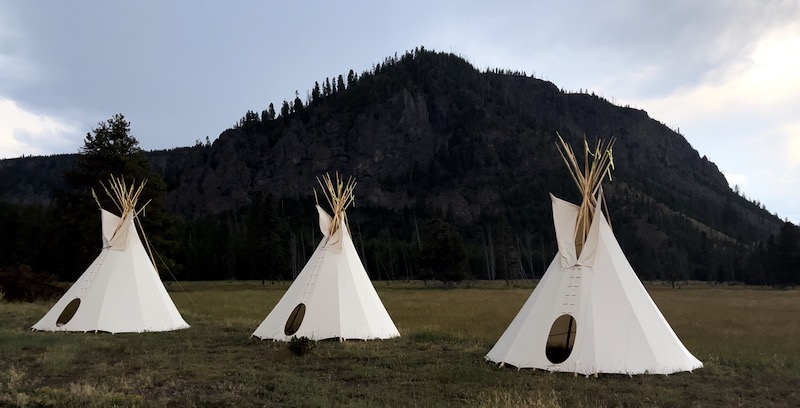
A plaque near this cabin reveals that this meadow is the location where the members of the Washburn, Langford & Doane Expedition spent their last night during their 1871 exploration of the Upper Yellowstone region. The plaque continues to tell that this is where the idea for protecting this unique landscape for the benefit and enjoyment of the people, first took hold.
Members of this party would go back to the world and tell of the wondrous sights that they beheld in this magical land. Some lobbied Congress, while others struck up deals with railroad companies to promote the idea. Their efforts were successful, and the world’s first national park was created the very next year. The mountain just across this meadow is named National Park Mountain, in honor of this area’s significance in this endeavor.
Driving north from Madison Junction, the GLR winds along the Gibbon River. Many pullouts along this route provide photographic opportunities to capture stunning images. Visitors may enjoy scenes including Gibbon Falls, Beryl Springs and even a short hike to the Monument Geyser Basin for those who wish to stretch their legs.
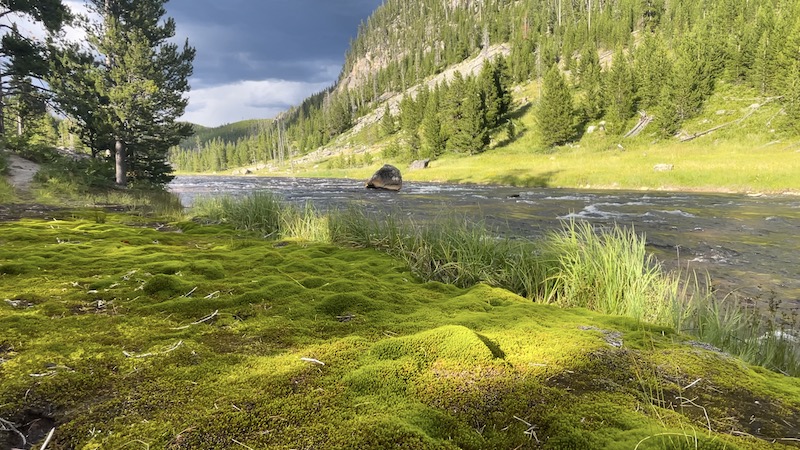
Fourteen miles north of Madison Junction is the Norris Geyser Basin, which provides a 110-site campground as well as the Norris Basin Museum and the Museum of the National Park Ranger.
Norris Geyser Basin
This is the oldest and hottest of Yellowstone’s geyser basins. Scientists estimate that this area has experienced continual thermal activity for more than 115,000 years and temperatures in its hydrothermal features have been measured up to 459° F at around 1,000 feet below the surface.
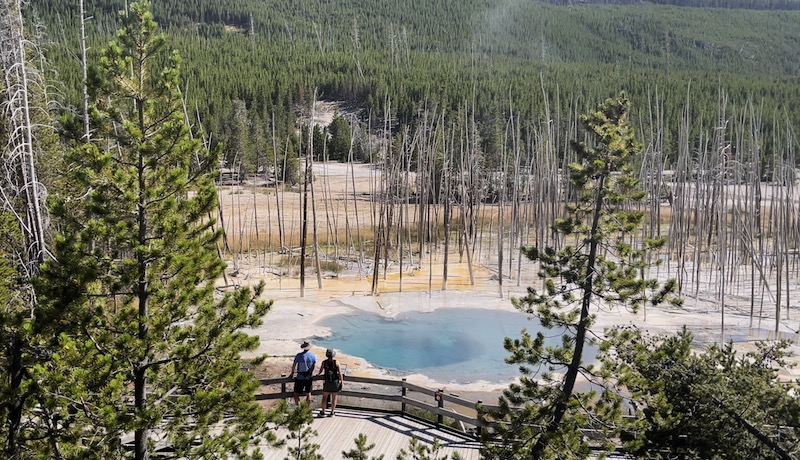
This basin is also home to Steamboat Geyser, the world’s tallest active geyser, which sprays water nearly 400 feet into the air. This thing is super unpredictable. Steamboat spent 2015, 2016 and 2017 sleeping, before waking up cranky in March of 2018, subsequently erupting more than 30 times before the year’s end, setting a new personal best as it eclipsed its previous known record of 29 eruptions in 1964.
Two loop trails begin from the Norris Basin Museum and Information Station. The 3/4 mile Porcelain Basin trail blazes across open terrain, providing views of hundreds of densely packed geothermal features, while the 1.5 mile Back Basin trail ushers visitors into a forested area with more isolated features, including the aforementioned Steamboat Geyser.
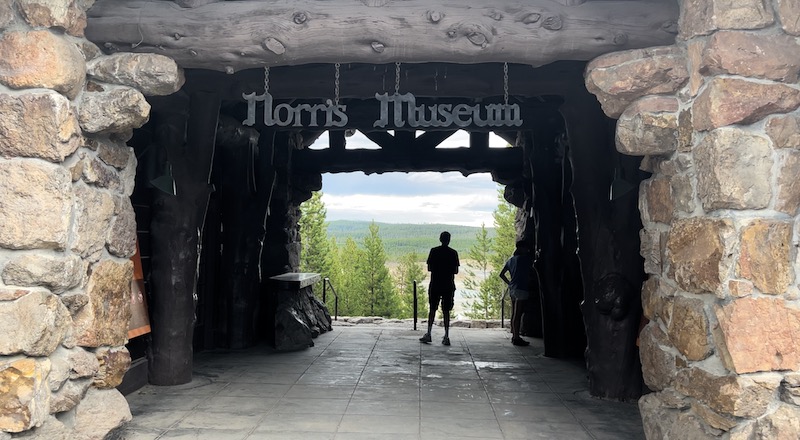
The road splits at Norris Junction, with the GLR continuing north toward Mammoth, while the option to head east toward Canyon Village is possible here too.
A few miles north of Norris lies Roaring Mountain, an acidic thermal area that may seem a mountain out of hell, as it sits hissing and steaming as if it could blow at any time… Moving north toward Mammoth takes travelers along the east flank of the Gallatin Mountain Range, with a number of 9,000 to 10,000 foot mountains rising to the west. The 70-site Indian Creek Campground is located about half way between Norris and Mammoth.
Back to Mammoth Hot Springs
Just before arriving at Mammoth visitors can stop for a hike up Bunsen Peak, arguably one of Yellowstone’s more popular hikes. This 4 mile climb of nearly 1,300 feet provides nice views of several surrounding peaks and is a nice way to stretch the legs after all of that driving. Parking can be problematic, but be sure not to park in the areas designated for horse trailer only.
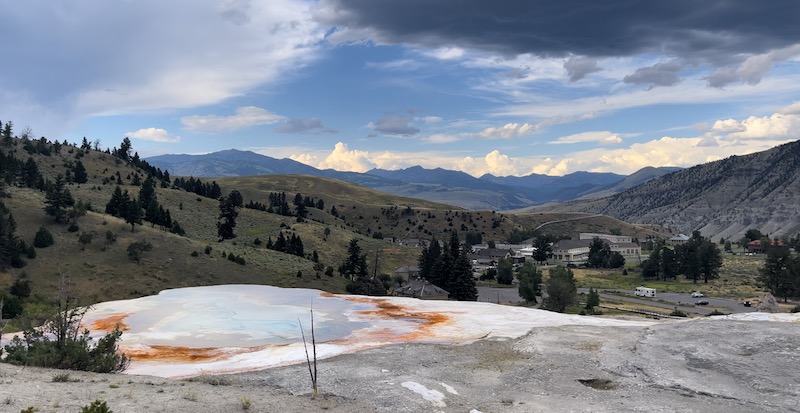
Continuing north from the Bunsen Peak Trailhead, the Upper Terrace Drive soon appears, and represents the entrance to the Mammoth Hot Springs area, where we began our journey, a little over 142 miles ago…
Wildlife
Over this harsh terrain roam 67 species of large mammals, the most varied population in North America. Here are found wolves, elk, grizzly bear, moose, mountain goats, bighorn sheep and abundant herds of bison, whose direct ancestors roamed Yellowstone’s valleys in prehistoric times.
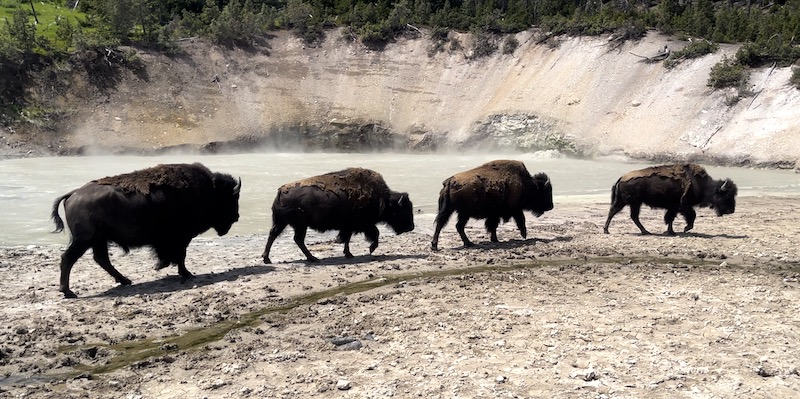
Please be aware, the park’s wildlife are in fact WILD! Yes, these animals can straight mess you up, even the peaceful looking creatures carry the ability to inflict serious harm to us weak and feeble humans, and yes… you too are weak and feeble when compared to a bison, an elk, a bear, a moose, a wolf or even a chipmunk. The majority of humankind could not spend a single day in the world of these creatures. Feels good to know we’re at the bottom of the pack huh?
Do not approach, feed or taunt the wildlife. Federal law prohibits such stupidity, but nevertheless, some fools continue to test their luck, and more than a few have lost. Park regulations require that humans keep a distance of 100 yards from bear and wolves, and 25 yards from bison, elk, moose and all other park creatures. Don’t be a bum, as the bums will always lose.
Playtime
At more than 2.2 million acres, the park is large, the second largest in the lower 48, and with more than 900 miles of trail, hiking opportunities are nearly endless. Topography here is rugged and can lead explorers through gorgeous meadows and along winding streams, over exposed mountain passes and beside raging rivers, all while bouncing between unique hydrothermal features that will have hikers scratching their heads.
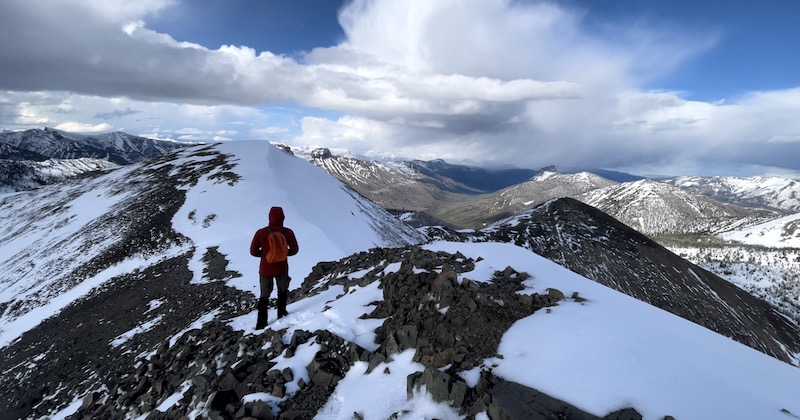
As is the case in most of our parks, the masses stick to the pavement, so a journey into the wilderness will increase the likelihood of a solitary experience. An overnight backpacking excursion to one of more than 300 backcountry sites can still today provide the wild essence of primitive Yellowstone.
Hiking trails of any distance will likely include substantial elevation change at an average of 8,000 feet above sea level. Overnight backcountry use in Yellowstone requires a permit that can be obtained at any of the park’s See hiking or backpacking on the Park Junkie Activities Page for more information.
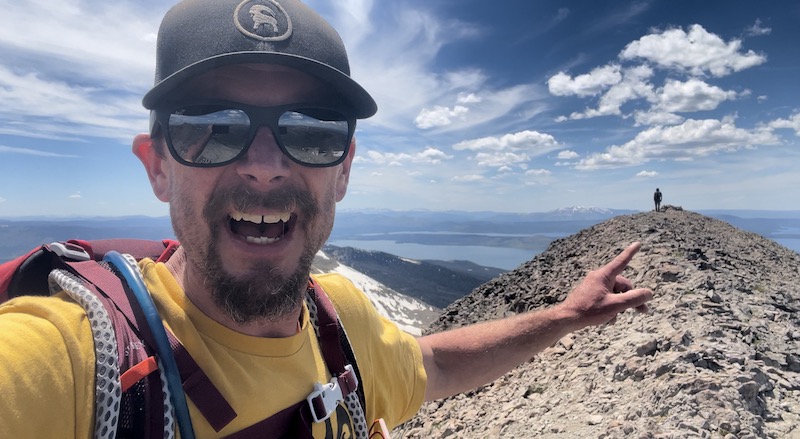
Another way to beat the crowds here is to get out on the water. Visitors who travel with a canoe, kayak or even motorboat can access some remote areas that are unique to waterborne travelergravel roads that are available for riding and these can provide a relaxing retreat from the congested roadways. See bicycling on the activities page.
Yellowstone has a great deal to offer any visitor. Casual travelers will be amazed at the roadside attractions, while the hardcore outdoorsman will find no limit to the adventures available in the world’s first national park.
Seasons in Yellowstone
Seasonal considerations are required in Yellowstone. Weather can turn ugly any time of the year, even in the heart of summer. Snow can fall here during any month of the year, and cold winds and rain are common, even in July and August.
Winter is harsh, and all park roadways are closed due to snow, except for the North Entrance to the Northeast Entrance. Snowmobiles and tracked vehicles can access the park with a permit.
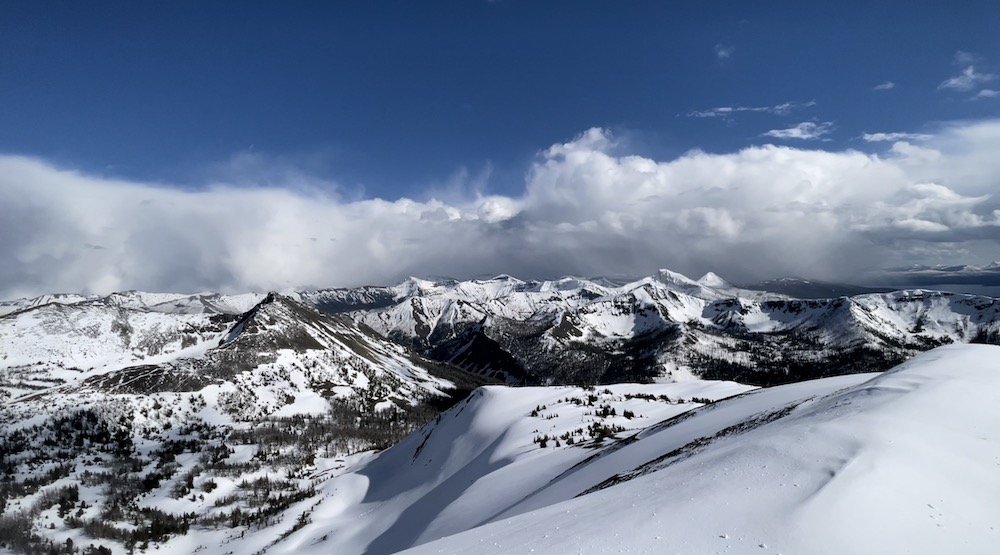
For those that have the gear and the ability to travel in high-mountain terrain in deep snow, this place can be one of the most rewarding destinations in the world. Backcountry skiing and snowboarding is possible in the park as well, and could provide a unique Yellowstone memory. See the visiting page for more info about Yellowstone in the winter.
Park Junkie Verdict
Yellowstone is obviously a classic national park, and there’s likely no one that hasn’t at least heard of it. Visiting the park can be feel a cumbersome affair, and to be honest, I’ve often avoided it over the past couple of decades, simply due to the crowds.
I’ve spent two summers in Yellowstone. I worked in the park for the 125th Anniversary in 1996, and again, for the 150th Anniversary in 2022. I was lucky enough to stay in the park during the closure that resulted from the floods of 2022, and explored as much of the park as I could that summer, enjoying the absolute solitude that the closure provided.
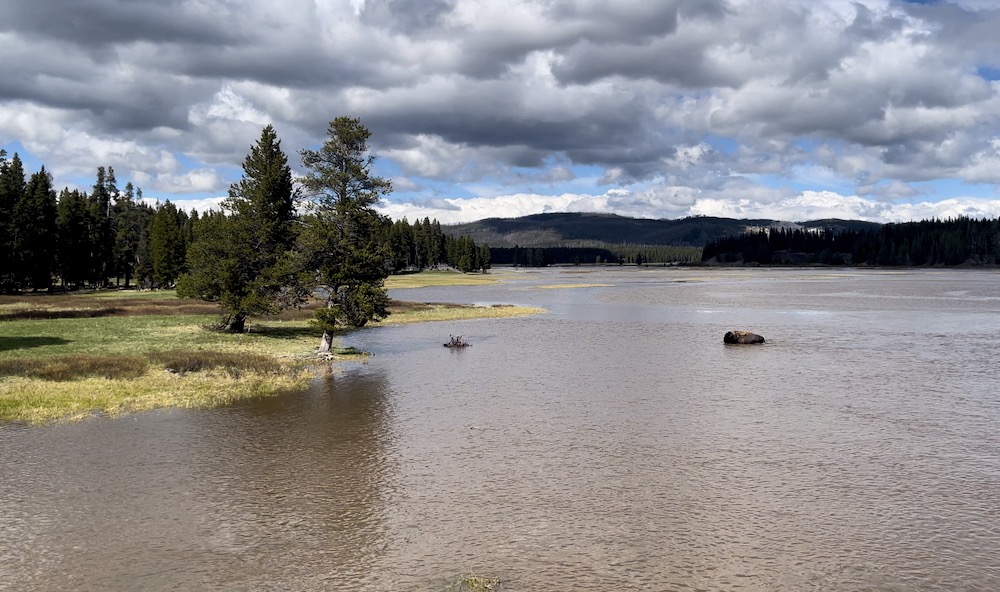
Upon reopening, the crowds returned, but I found the boardwalks and popular areas to be easily navigable during the duration of the summer. Do not let the rumors of crowds scare you, this park is for everyone, for each and every one of us.
Yellowstone is the epitome of what many people believe a national park to be. It is nearly impossible to capture the spirit of Yellowstone in a single image, a single video or a complete article. This place is wild and unpredictable. That is exactly what makes it so special.
Those who seek solitude in this park can certainly find it, no matter the lines at the gate or the boardwalks. The backcountry of Yellowstone is as wild as it has ever been, and those who thirst for adventure need look no further than the nearest trailhead for a portal into this massive wilderness.
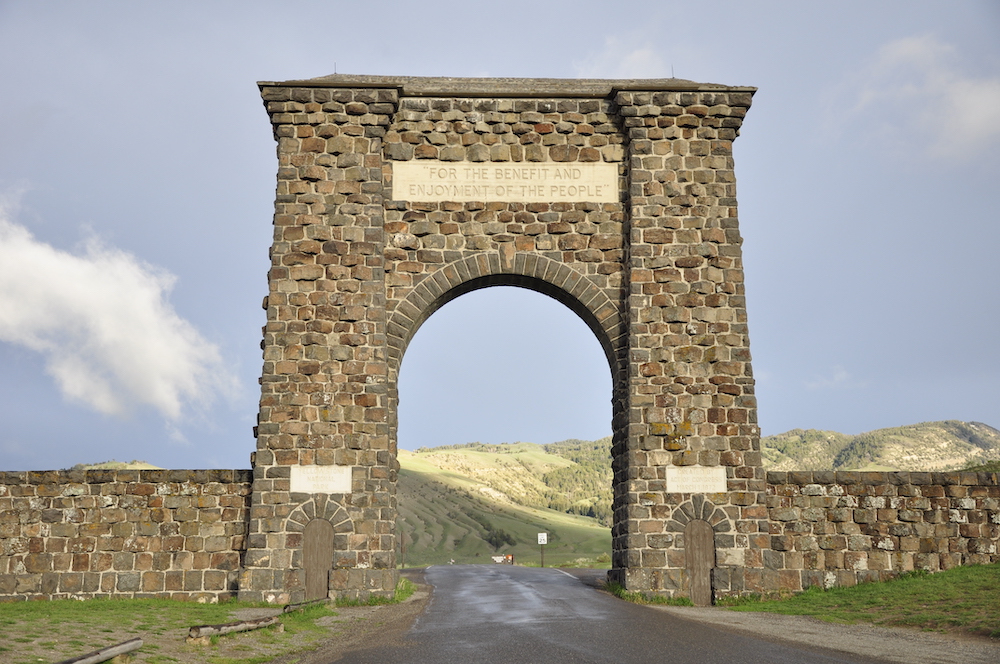
Appreciate the opportunity to explore a fabled land such as Yellowstone. We are indeed a lucky people, in that wise pioneers came before us with the grand idea of wilderness preservation and setting such lands aside for the benefit and enjoyment of the people.
This fact my friends, is indeed priceless.
See ya there…
Guide to Yellowstone
Relevant Links
National Park Guides

All content found on Park Junkie is meant solely for entertainment purposes and is the copyrighted property of Park Junkie Productions. Unauthorized reproduction is prohibited without the express written consent of Park Junkie Productions.
YOU CAN DIE. Activities pursued within National Park boundaries hold inherent dangers. You are solely responsible for your safety in the outdoors. Park Junkie accepts no responsibility for actions that result in inconveniences, injury or death.
This site is not affiliated with the National Park Service, or any particular park.
